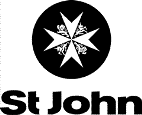|

Shock
Recognition
In the case of a serious accident (and once you have treated any obvious injuries and called an ambulance), watch for signs
of shock;
Initially:
- Fast, shallow breathing
- Pale, cold, clammy skin
As Shock develops:
- Grey-blue skin (cyanosis), espically inside the lips. A fingernail or earlobe, if pressed, will not regain its colour
immediately
- Rapid, weak pulse
- Sighing
- Thirst
- Weekness and dizziness
- Nausea and possibly vomiting
As the brain's oxygen supply weakens:
- Yawning and gasping for air
- Restlessness and aggressiveness
- Unconsciousness
Finally the heart will stop.
Treatment
- Send for an ambulance, 112.

- Lay the casualty down, raise and support their legs.
- Use a coat or blanket to keep them warm – but not smothered.
- Do not give them anything to eat or drink.
- Check breathing and pulse frequently. If breathing stops, follow the Resuscitation Sequence – DRABC .
- Give lots of comfort and reassurance.
|

